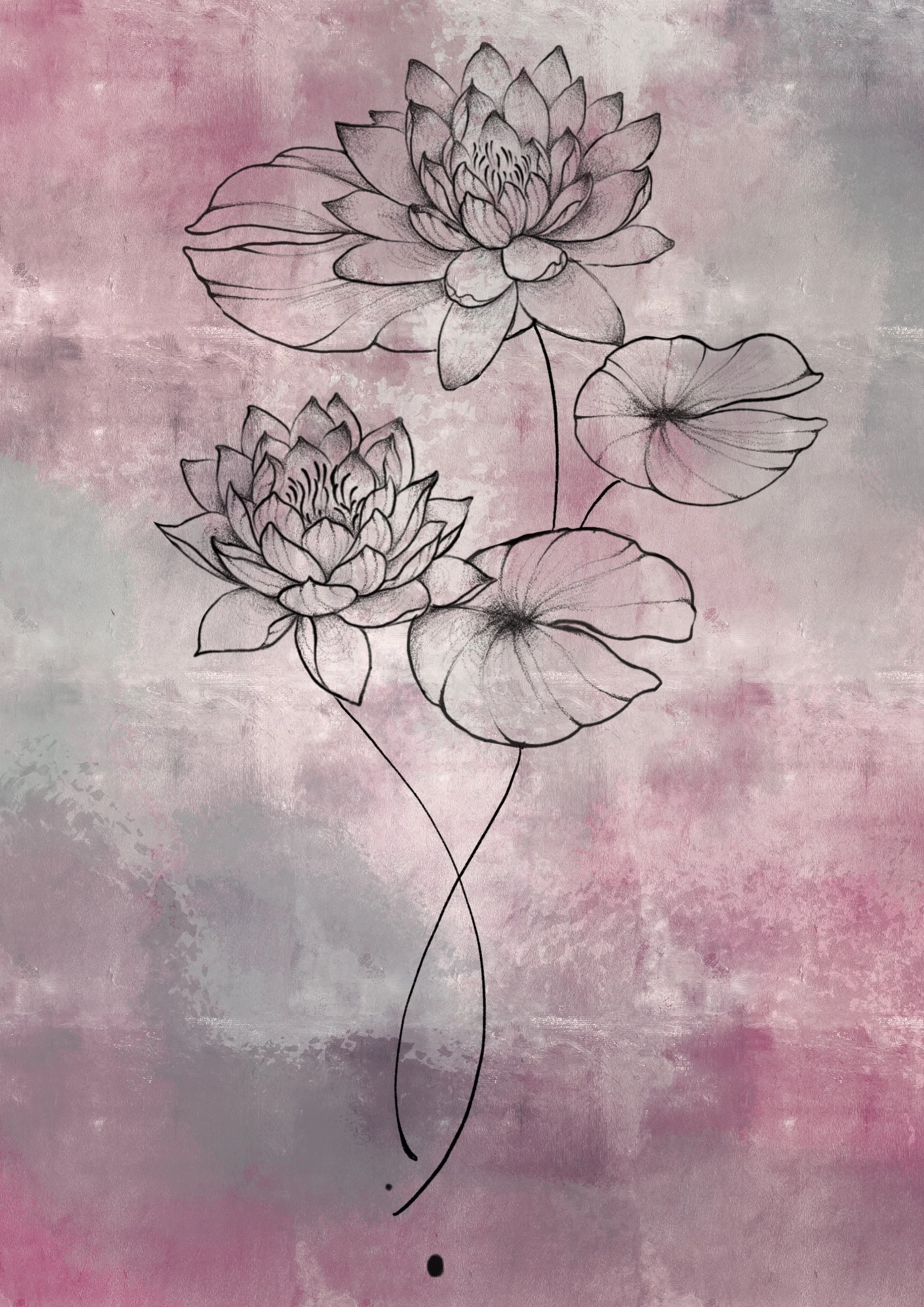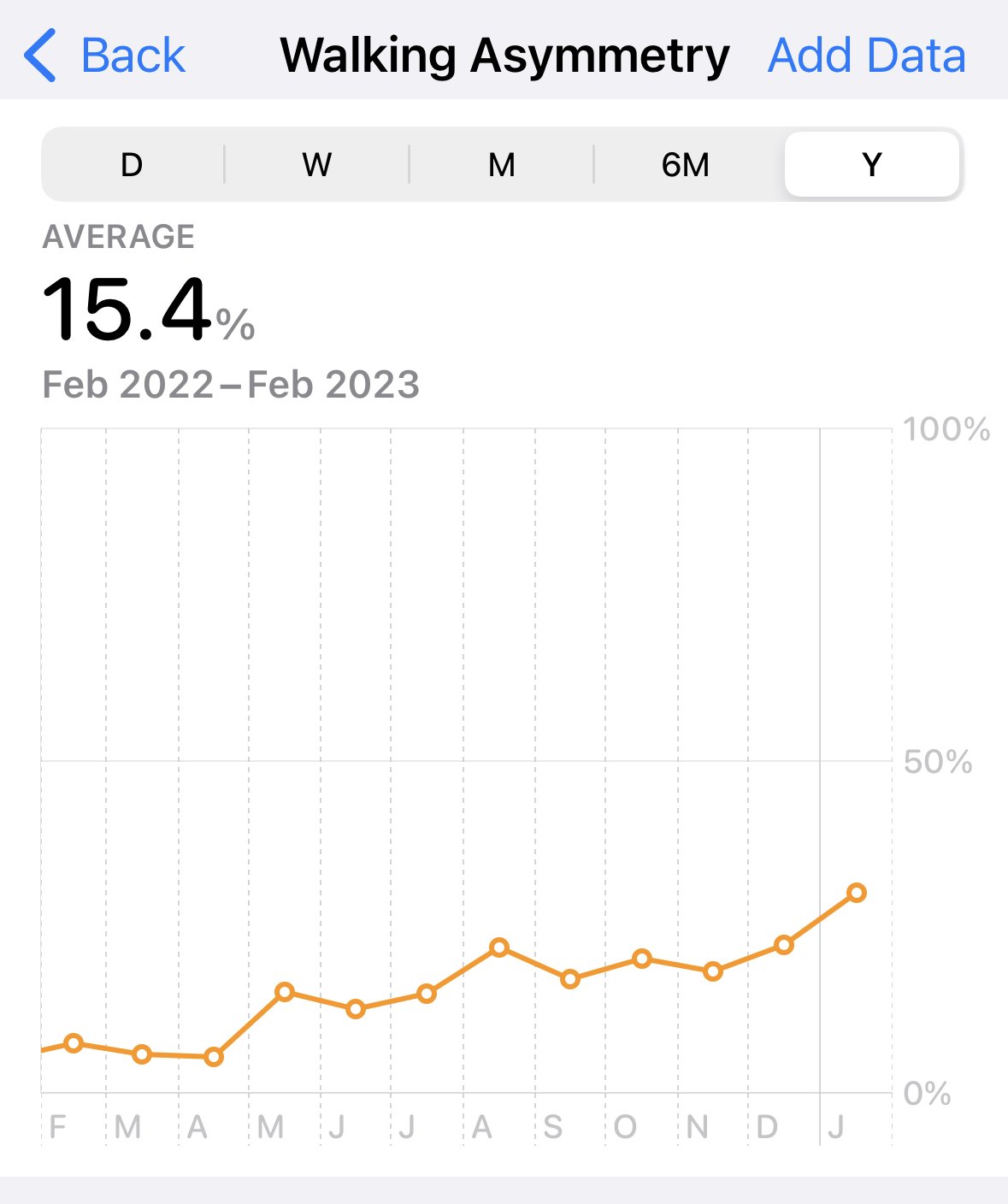
Is Tai Chi good for you?
Difficult to say, but speaking as a slightly overweight man in his late fifties (1.9 m, 98 kg), I enjoy it! And isn’t that half the battle with exercise?
Difficult to say, but speaking as a slightly overweight man in his late fifties (1.9 m, 98 kg), I enjoy it! And isn’t that half the battle with exercise?
In a teaching session of just over one hour this week, I burned 357 kcal, and saw my heart rate go from 94-135 bpm.
Average Heart Rate over six months
That’s in the context of a heart beat ranging from 41-201 bpm over the last six months and a resting rate of 67-85 bpm in the same period.
Cardio Fitness over six months
Although I either train or teach three to four times a week, I feel I have long way to go on my fitness journey, as my overall Cardio Fitness is currently showing as ‘below average’.
Equipment: Apple Watch, Apple iPhone with Apple Health app and Withings ScanWatch with Health Mate app.
Walking Asymmetry
“In a healthy walking pattern, the timing of the steps you take with each foot are very similar. Walking asymmetry is the per cent of time your steps with one foot are faster or slower than the other foot. This means the lower the percentage of asymmetry, the healthier your walking pattern.”
— Apple Health app.
In my case, walking asymmetry is caused by osteoarthritis of the hip.
After my forthcoming hip replacement surgery, my goal is to train or teach an hour a day.
I’d then hope to see a reduction in walking asymmetry and an increase in Cardio Fitness.
You might enjoy the following BBC programme with Dr Michael Mosely: Just One Thing - Try Tai Chi (link).
In his short programme, he discussed how Tai Chi, sometimes described as shadow boxing or meditation in motion, might improve one’s balance, immune system, and heart health. It may also be as effective for weight loss as conventional exercise and helpful for improving cognitive function.
What is Push Hands?
Pushing hands is said to be the gateway for students to experientially understand the martial aspects of the internal martial arts (內家 nèijiā): leverage, reflex, sensitivity, timing, coordination and positioning.
Push Hands / Tui Shou
Pushing hands is said to be the gateway for students to experientially understand the martial aspects of the internal martial arts (內家 nèijiā): leverage, reflex, sensitivity, timing, coordination and positioning. Pushing hands works to undo a person's natural instinct to resist force with force, teaching the body to yield to force and redirect it. Some t'ai chi schools teach push hands to complement the physical conditioning of performing solo routines. Push hands allows students to learn how to respond to external stimuli using techniques from their forms practice. Among other things, training with a partner allows a student to develop ting jing (listening power), the sensitivity to feel the direction and strength of a partner's intention. In that sense pushing hands is a contract between students to train in the defensive and offensive movement principles of their martial art: learning to generate, coordinate and deliver power to another and also how to effectively neutralize incoming forces in a safe environment.
From https://en.wikipedia.org/wiki/Pushing_hands
We have collected some YouTube links that you might find useful to help gain an understanding of what Push Hands is, and how it might help your training.
Emma Lee and Barry McGinlay from the Longfei Taijiquan Association of Great Britain
Hai Yang, Montreal
Fixed competition, junior and adult, London
Marcello Sidoti, free Tui Shou, Italy
Ismet Himmet, Germany
Chen Style, Ken Gullette, USA
Chen Style, Wuying Feng & Chen Xili
Yang Style. Master Yang Jun and Lance Lu, USA
Yang Style, Michael Gilman (1 hr+), fixed
Yang Style, Michael Gilman (1 hr+), active stepping
The material presented here is freely and publicly available, and is intended to show the diversity of push hand styles and content available to Tai Chi practitioners.
Always consult your instructor for guidance in the Wutan syllabus.
The Short Form - an aide memoir
A simple reminder on the sequence of sections in the 37 posture short form after Cheng.
Yang Family Style Tai Chi - thirty-seven ‘postures’, after Cheng Man-ch'ing (or Zheng Manqing).
Always forgetting the sequence of moves? We hope this helps.
Each ‘section’ finishes / starts with Single Whip.
Opening section
Brush knee pushes
Repulse monkeys & cloud hands
Kick section
Fair lady works at shuttles ( ‘Four corners’)
Seven stars of the dipper ( ‘Seven star fist’)
Done at breathing pace, this should take you between 6 and 7 minutes.
The National Health Service's Guide to Tai Chi
The United Kingdom National Health Service (NHS) maintains guidelines on their website.
Photo by Hush Naidoo on Unsplash
The United Kingdom National Health Service (NHS) maintains guidelines on their website.
It defines Tai Chi as follows:
Tai chi, also called tai chi chuan, combines deep breathing and relaxation with flowing movements. Originally developed as a martial art in 13th-century China, tai chi is now practised around the world as a health-promoting exercise.
It goes on to offer the following view on health benefits:
What are the health benefits of tai chi?
While there's scope for more rigorous research on tai chi's health benefits, studies have shown that it can help people aged 65 and over to reduce stress, improve posture, balance and general mobility, and increase muscle strength in the legs.
The guide goes on to suggest that Tai Chi may provide benefit to some patients with arthritis and those who are at increased risk of falling.
See the full text here - ‘A guide to tai chi’
The Health Benefits of Tai Chi
The BBC series 'Trust me I'm a Doctor', hosted by Dr Michael Mosley, conducted a 12 week experiment to compare the effect of exercise on two groups of volunteers between the ages of 65 and 75. Neither group had previously conducted regular exercise. One group participated in Zumba classes and the other in Tai Chi.
Photo by Agathe Marty on Unsplash.
The BBC series 'Trust me I'm a Doctor', hosted by Dr Michael Mosley, conducted a 12 week experiment to compare the effect of exercise on two groups of volunteers between the ages of 65 and 75. Neither group had previously conducted regular exercise. One group participated in Zumba classes and the other in Tai Chi.
As expected, the group participating in Zumba showed an improvement in health and fitness. But perhaps surprisingly, the group practising Tai Chi showed similar improvements in blood biomarkers, blood pressure and vessel flexibility.
The programme was shown in January 2019, but, sadly is no longer available on BBC iPlayer. To read more visit Could Tai Chi offer the same benefits as more vigorous exercise?
The researchers at the University of Birmingham that supported this BBC programme have also undertaken health research that included younger volunteers (18-25). To read more visit this link.
To experience the health benefits of Tai Chi for yourself, join Anita Ho in one of her classes (see https://wutansurrey.com/classes).
Anita has been teaching Tai Chi since 2012 and is a registered instructor with Wutan UK Martial Arts.













